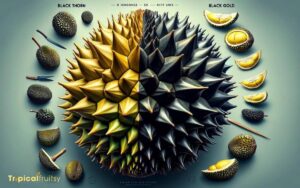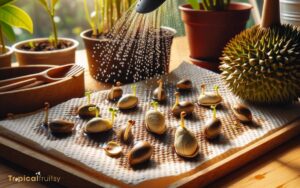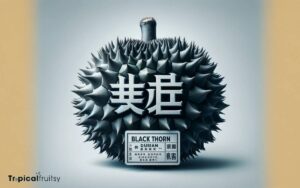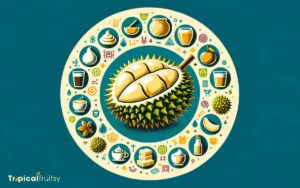What Is a Durian Fruit? Exotic Unveiled!
The durian fruit is a unique tropical fruit from Southeast Asia, widely recognized for its size, spiky shell, and strong scent. It is taxonomically known as Durio and falls under the Malvaceae family.
Often hailed as the ‘king of fruits’ in Asia, durian’s creamy texture and potent aroma create a divisive taste profile that is both celebrated and controversial.
Rich in nutrients, durians are a powerhouse of vitamins and minerals, contributing beneficially to the diets of those in its native regions.
Durian fruit, indigenous to Southeast Asia, has a reputation that precedes it due to its potent odor and formidable thorn-covered husk. It belongs to the genus Durio. The fruit’s interior features a soft, custard-like flesh that envelopes its large seeds.
The scent of durian is infamously pungent, and its flavor can be surprisingly sweet or resemble a savory, cheesy taste, depending on the individual’s palate or the specific variety of durian.
This fruit is not only a culinary delicacy but also a nutritional powerhouse:
Discover the durian fruit’s intriguing taste and nutritional benefits, a true delicacy with a unique sensory profile.
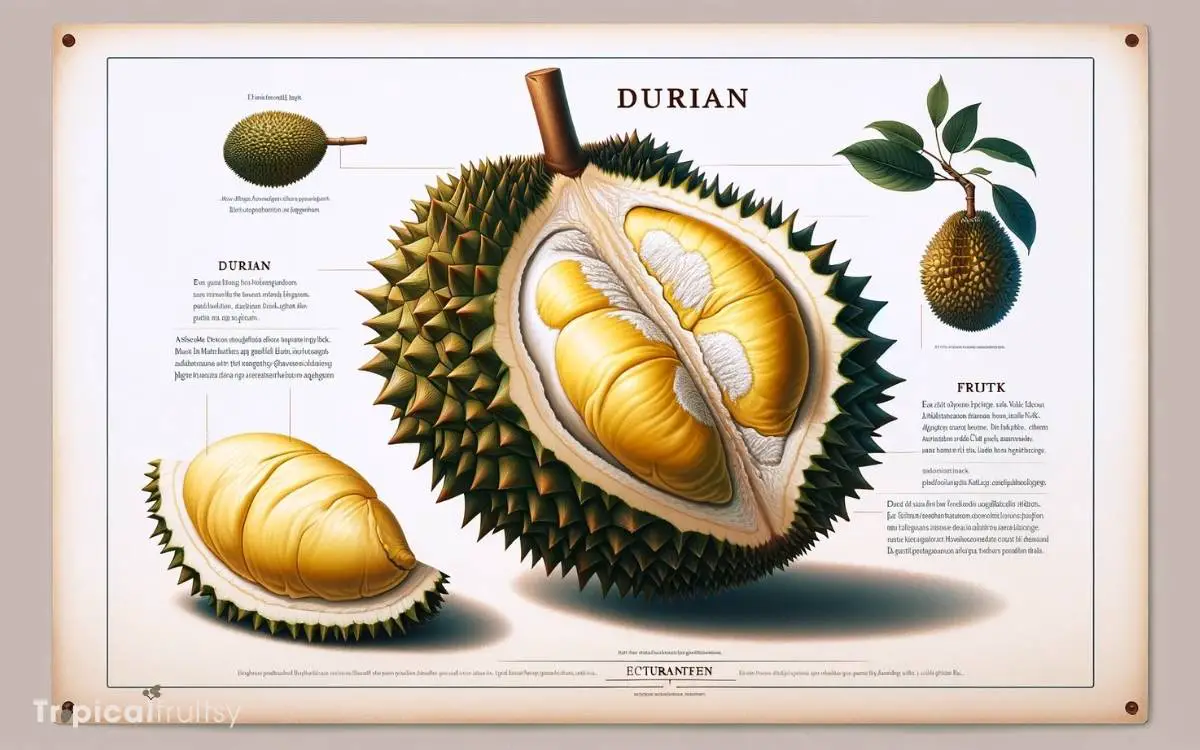
Key Takeaway
Nutritional Value of Durian Fruit: A Comprehensive Guide
| Nutrient | Amount |
|---|---|
| Energy | 147 kcal |
| Carbohydrates | 27.09g |
| Protein | 1.47g |
| Total Fat | 5.33g |
| Dietary Fiber | 3.8g |
| Sugars | Not Specified |
| Vitamin C | 19.7mg |
| Thiamin (B1) | 0.374mg |
| Riboflavin (B2) | 0.2mg |
| Niacin (B3) | 1.074mg |
| Vitamin B6 | 0.316mg |
| Folate (B9) | 36µg |
| Vitamin A | 44 IU |
| Calcium | 6mg |
| Iron | 0.43mg |
| Magnesium | 30mg |
| Phosphorus | 39mg |
| Potassium | 436mg |
| Sodium | 2mg |
| Zinc | 0.28mg |
Understanding Durian Basics

The durian is a distinctive tropical fruit known for its large size, unique odor, and thorn-covered husk.
It belongs to the genus Durio, with around 30 species recognized, though only a few are commercially available. The most widely consumed species is Durio zibethinus.
Durians possess a formidable morphology, often reaching up to 30 centimeters in length and weighing one to three kilograms.
The exocarp or skin is a tough, spiky rind, providing protection and aiding in the fruit’s adherence to the trees. The fruit’s flesh, or aril, varies in color from pale yellow to red, depending on the species.
It is known for its rich, custard-like texture and potent aroma, which can be overpowering and is often described as a blend of savory, sweet, and creamy flavors.
The Durian Aroma Debate
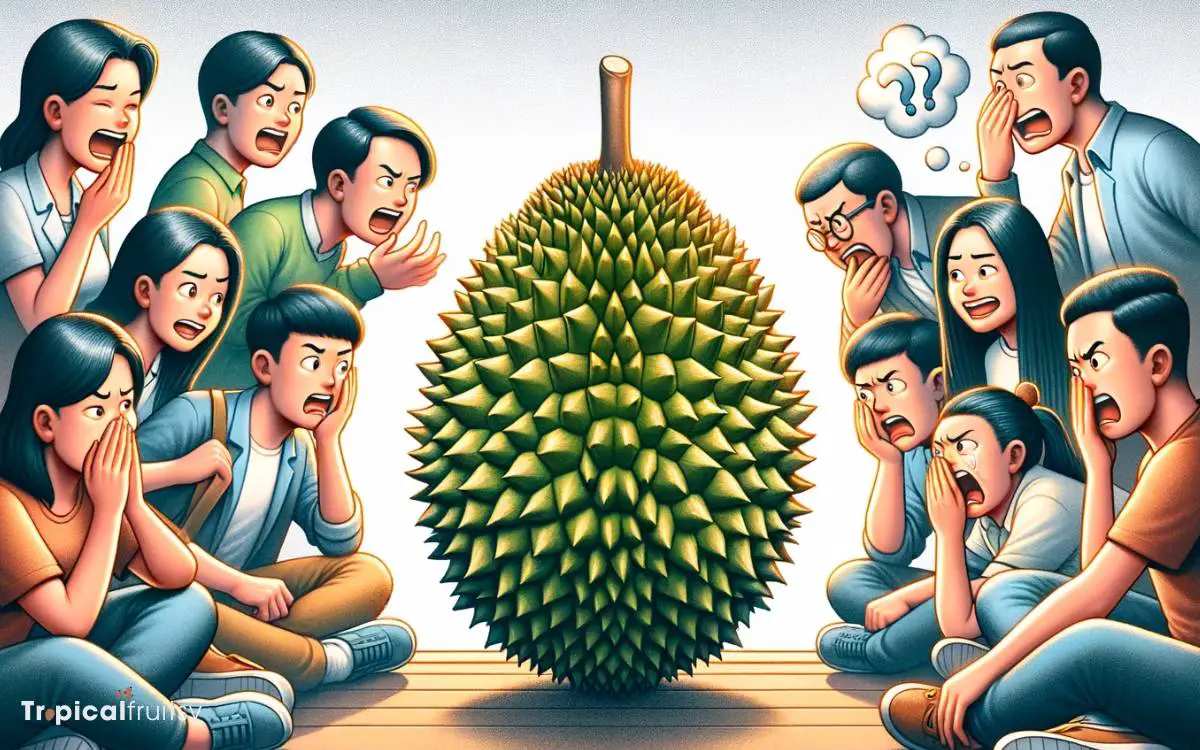
Despite its cherished status in many cultures, the durian’s pungent aroma incites passionate debate among both enthusiasts and detractors.
The scent of durian is so distinctive and evocative that it has been the subject of numerous studies attempting to deconstruct its complex chemical composition.
For a clearer understanding, consider the following:
- Volatiles: Over 50 volatile compounds contribute to the durian’s unique smell, including esters, ketones, and alcohols.
- Sulfur Compounds: These compounds, such as ethanethiol, are often associated with the odor of skunk spray or rotten eggs, playing a significant role in the durian’s divisive scent profile.
- Genetic Variation: Different cultivars exhibit varying levels of odor intensity and composition, affecting individual perception and tolerance.
- Cultural Perception: Exposure and cultural background greatly influence whether the aroma is perceived as fragrant or foul.
Nutritional Value Breakdown
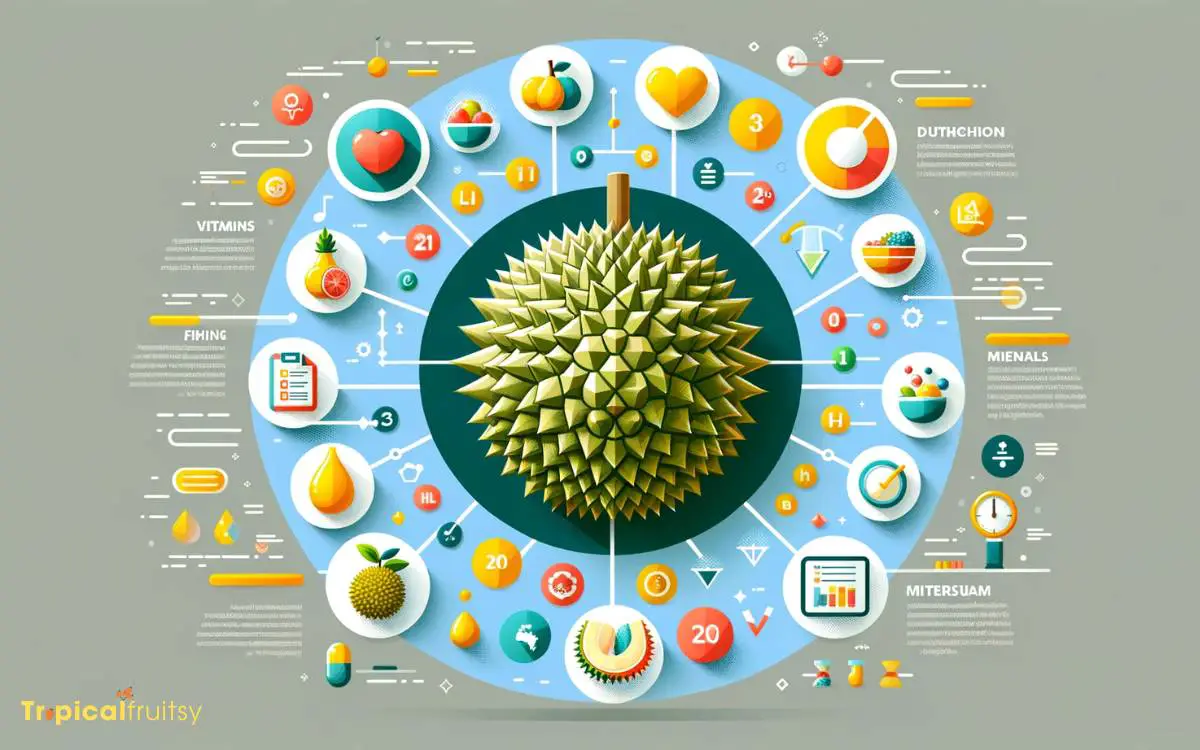
Moving beyond its distinctive smell, durian fruit is also notable for its rich nutritional profile, which includes a high content of vitamins, minerals, and dietary fiber.
A single serving of durian (approximately 243 grams) provides a substantial amount of energy, roughly 357 calories, primarily from carbohydrates.
The fruit is an excellent source of vitamin C, crucial for immune function, and B vitamins, particularly thiamin and niacin, which are essential for energy metabolism.
It also contains dietary fiber, promoting digestive health, and a significant level of potassium, which is vital for maintaining electrolyte balance and cardiovascular health.
Durian offers beneficial monounsaturated fats and has a moderate glycemic index, which makes it relatively suitable for blood sugar management when consumed in moderation.
Cultural Significance Explored
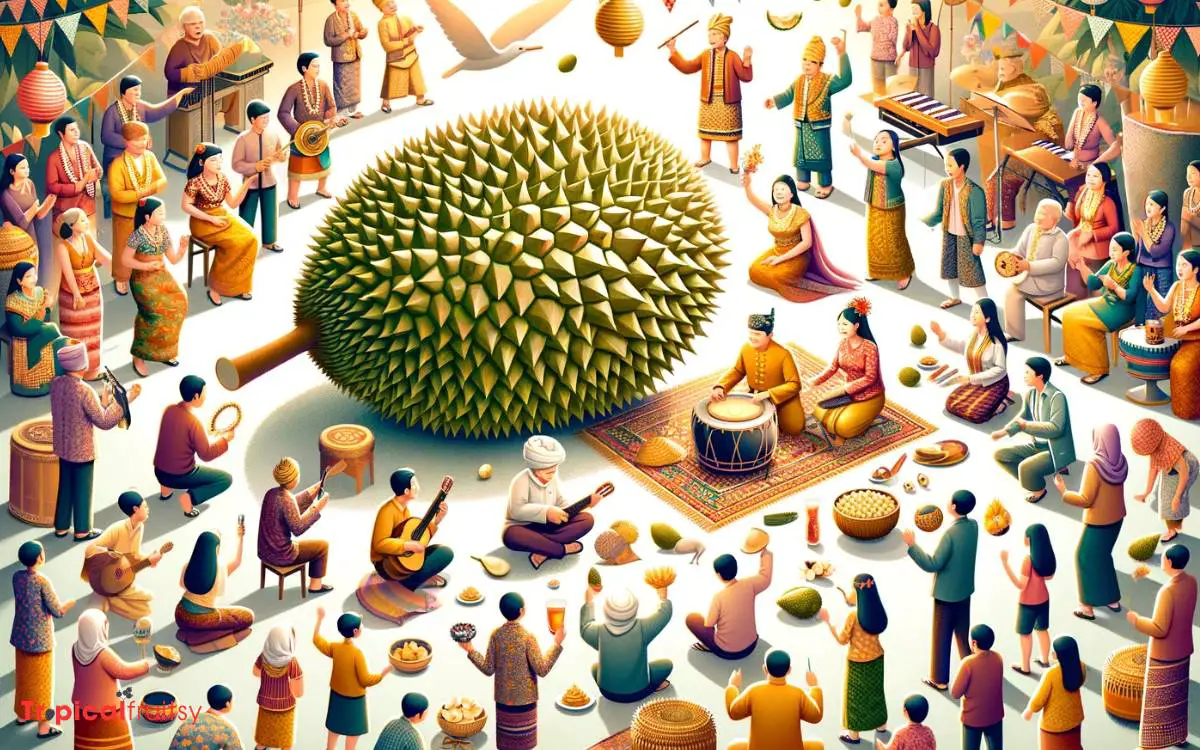
Frequently hailed as the ‘King of Fruits’ in Southeast Asia, the durian holds a revered place in the cultural and culinary traditions of the region.
The fruit’s cultural significance can be encapsulated as follows:
- Symbolic Presence: Durian is often a symbol of opulence and is used in festive decorations and as a prestigious gift.
- Culinary Heritage: Traditional recipes incorporate durian in both sweet and savory dishes, showcasing its versatility in regional gastronomy.
- Agricultural Economy: Durian cultivation is vital to local economies, with meticulous breeding techniques enhancing its commercial value.
- Community Celebrations: Durian festivals celebrate the harvest, fostering community spirit and tourism.
Understanding the depth of durian’s cultural roots enriches the appreciation of its consumption.
Eating Durian: Tips and Tricks
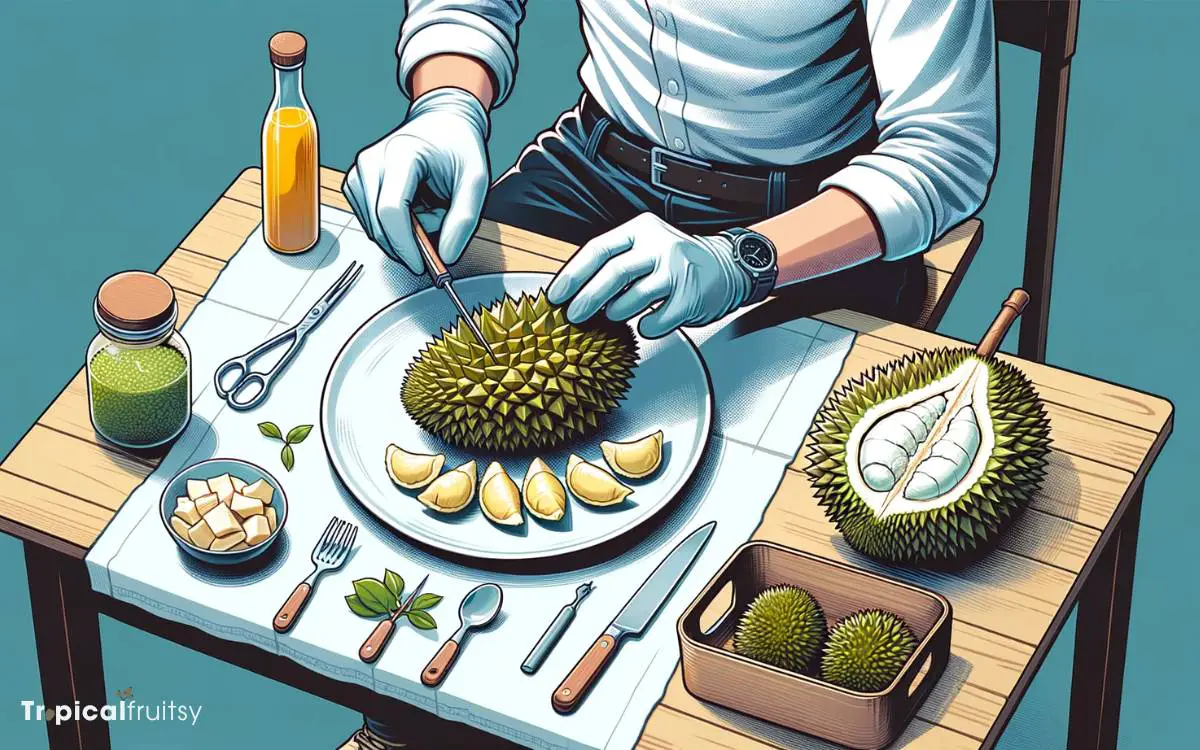
Transitioning from cultural appreciation to practical indulgence, selecting and consuming durian fruit requires adherence to specific tips and tricks to enhance the experience.
The following table summarizes key considerations:
| Aspect | Guideline |
|---|---|
| Selection | Seek out fruits with a firm stem and a strong aromatic scent; a slightly soft shell indicates ripeness. |
| Opening | Use gloves to handle the spiky exterior and cut along the seams with a sharp knife. |
| Consumption Method | Consume fresh segments raw, or incorporate into culinary dishes as desired. |
| Flavor Enhancement | Pair with sticky rice or coconut milk to balance the robust flavor profile. |
| Disposal of Remains | Seal remnants in airtight containers to minimize the pervasive odor. |
Adhering to these methods will significantly augment your durian tasting experience.
What Does Durian Fruit Look Like
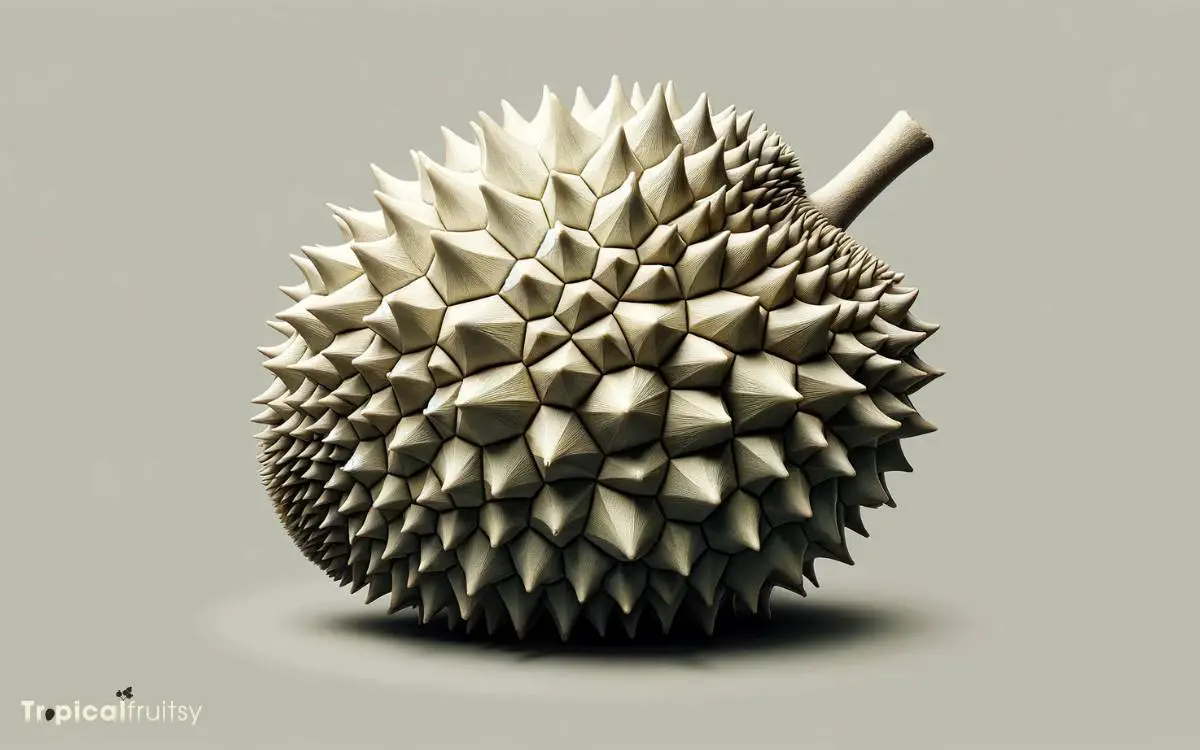
Durian fruit is known for its distinctive appearance and strong aroma. It is a large fruit, typically about 30 centimeters (12 inches) long and 15 centimeters (6 inches) in diameter.
The shape of the durian can vary somewhat but it is generally oblong or round. The outer shell is thick, tough, and covered in sharp, spiky thorns.
These spikes can be quite sharp, making the fruit somewhat challenging to handle without gloves or proper tools.
The color of the durian’s husk ranges from green to brownish, depending on the type and ripeness of the fruit. Inside, durian fruit contains several large, cream-colored seed pods.
The edible flesh that surrounds these seeds is custard-like in texture and yellowish-white in color. This flesh is what people eat, either fresh or incorporated into various dishes and desserts.
Despite its popularity in Southeast Asia, where it is often referred to as the “king of fruits,” durian’s intense smell and unique taste can be polarizing to those who are not accustomed to it.
The aroma of durian fruit is strong and penetrating, even when the husk is intact, and it has been described in many ways, with some finding it pleasantly sweet and others comparing it to various unpleasant odors.
Conclusion
The durian fruit stands as a paradoxical marvel within the botanical world, its pungent aroma clashing with a rich tapestry of cultural adoration.
The intricate balance of its nutritional profile complements its complex societal role.
As one peels back the layers, both literally and figuratively, the durian’s enigmatic nature beckons a deeper understanding, challenging preconceived notions while promising a sensory adventure that transcends mere taste, resonating with the very essence of culinary exploration.

